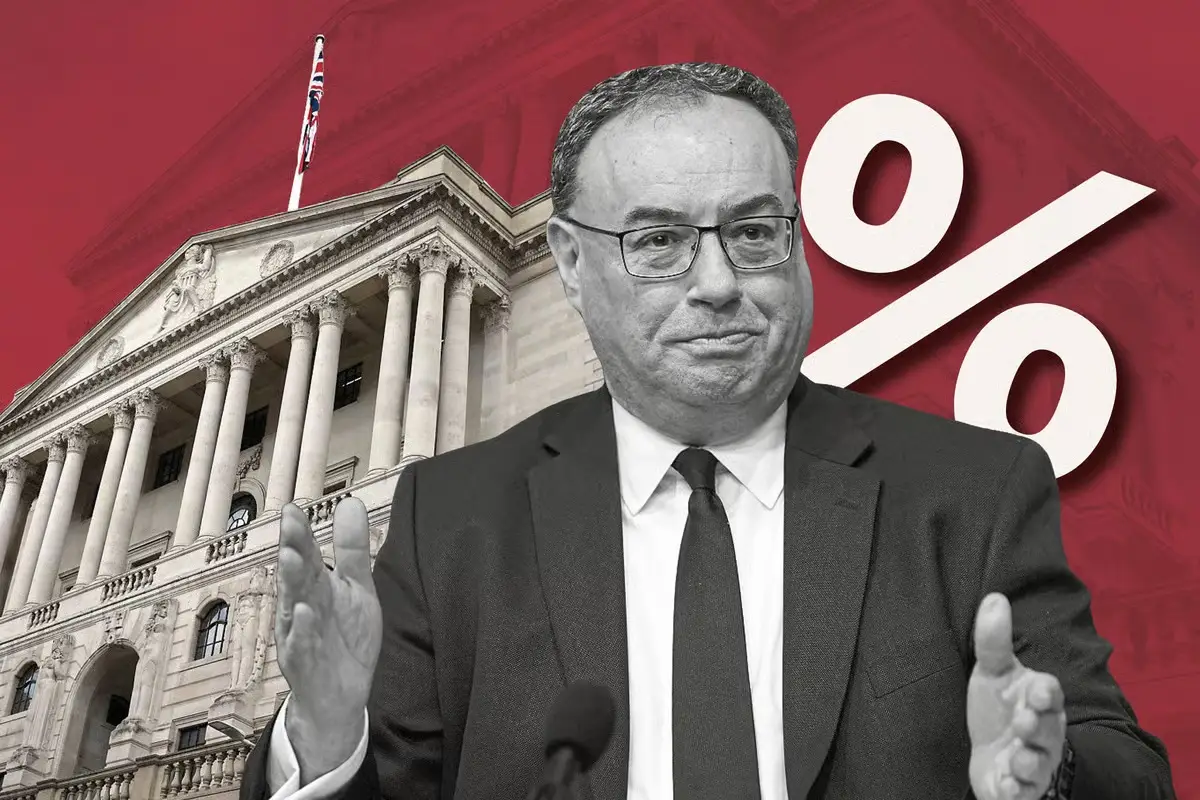The United States has imposed crushing 50% tariffs on Indian goods, dealing a severe blow to the world’s fastest-growing large economy and marking the deepest rupture in US-India relations in decades. The punitive levies, which took effect at 12:01 AM US Eastern time on Wednesday, represent among the highest tariff rates imposed by the United States on any trading partner globally.
President Donald Trump’s dramatic escalation stems from India’s continued purchases of discounted Russian oil, despite mounting pressure from Washington to sever economic ties with Moscow. The 25% penalty tariff, stacked on top of an existing 25% “reciprocal” tariff, transforms what was once hailed as a strategic partnership into one of the most contentious bilateral trade relationships in the world.
Build the future you deserve. Get started with our top-tier Online courses: ACCA, HESI A2, ATI TEAS 7, HESI EXIT, NCLEX-RN, NCLEX-PN, and Financial Literacy. Let Serrari Ed guide your path to success. Enroll today.
A Strategic Partnership in Ruins
The deterioration in US-India relations has been described as “head spinning” by Alyssa Ayres, a former State Department official now at George Washington University. The collapse represents a stunning reversal from the warmth displayed just months earlier when Modi visited the White House in February 2025, calling Trump a “great friend” and pledging to double bilateral trade to $500 billion by 2030.
“Trump is trying to get at Putin and India is a soft target to do so,” explained Ashok Malik, chair of The Asia Group’s India practice and former foreign ministry policy adviser. The targeting of India appears designed to pressure Russian President Vladimir Putin to end his war in Ukraine, using America’s economic leverage over New Delhi as a proxy weapon.
The tariff escalation follows the breakdown of trade negotiations that had initially targeted reaching a first-stage deal by early summer. According to sources briefed on the matter, Prime Minister Narendra Modi avoided direct communication with Trump in the run-up to the tariff deadline, wary of the president attempting to extract concessions outside the formal negotiating framework.
Economic Impact: A $50 Billion Hit
The economic ramifications for India are severe but not necessarily debilitating. The Global Trade Research Initiative, a New Delhi-based think tank, predicts Indian exports to the US could plummet from $86.5 billion this year to approximately $50 billion in 2026 – a devastating 42% decline that would affect millions of jobs across key sectors.
Standard Chartered forecasts the tariffs could reduce India’s GDP growth by as much as 1 percentage point, though Anubhuti Sahay, the bank’s head of India economic research, noted that India’s domestically focused economy faces less exposure than more export-oriented Asian peers like South Korea or Taiwan.
The hardest-hit sectors will include:
Textiles and Apparel: Facing a projected 70% collapse in exports, threatening hundreds of thousands of jobs in India’s labor-intensive garment industry.
Gems and Jewelry: India’s diamond and jewelry exports, valued at $9.9 billion in FY24, face severe disruption despite traditional competitive advantages in cutting and polishing.
Pharmaceuticals: While currently exempt from the 50% rate, Trump has threatened “major duties” on this sector, potentially devastating India’s $8.7 billion pharmaceutical exports to America.
Carpets and Handicrafts: Traditional export sectors dependent on US markets face near-total displacement as tariff costs make Indian goods uncompetitive.
Shrimp and Seafood: Marine product exports, particularly from coastal states, confront major market access challenges.
The Russia Connection: Energy Security vs. Geopolitical Alignment
At the heart of the US-India dispute lies New Delhi’s continued energy relationship with Moscow. India has increased its Russian oil imports to 36% of total crude purchases, up from just 0.2% before Russia’s invasion of Ukraine. This shift reflects India’s pragmatic approach to energy security for its 1.4 billion population, prioritizing affordable fuel over Western geopolitical preferences.
“India will never compromise on the interests of the country’s farmers, fishermen, and livestock breeders. I know it will cost me personally, but I am ready,” Modi declared Thursday morning, hours after the US tariff increase took effect. This defiant stance demonstrates New Delhi’s unwillingness to sacrifice national interests for American approval.
Complicating matters further, most of India’s oil trade with Russia is conducted in UAE dirhams rather than US dollars, contradicting Trump trade advisor Peter Navarro’s claims that India uses American currency to fund Russian energy purchases. Additionally, Indian companies own stakes in many Russian oil fields, making complete severance of energy ties extremely difficult.
Strategic Realignments: The Pakistan Factor
Adding insult to injury for India, Trump has simultaneously cultivated warmer relations with Pakistan, India’s historic rival and security threat. The American president hosted Pakistan’s army chief at the White House in June and announced oil exploration deals with Islamabad, while Pakistan faces only 19% tariffs compared to India’s punitive 50% rate.
Trump’s claims of brokering a ceasefire during a brief India-Pakistan border conflict in May further inflamed tensions, with Indian officials categorically denying any American role in the resolution. Pakistan, conversely, has said it will nominate Trump for the Nobel Peace Prize, highlighting the dramatic shift in regional dynamics.
Bilateral Trade: The Numbers Behind the Conflict
The scale of US-India economic integration makes the tariff war particularly damaging for both sides. Bilateral trade reached a record $131.84 billion in FY25, with the US serving as India’s largest trading partner for the fourth consecutive year. India maintains a significant trade surplus of $41.18 billion, meaning it exports substantially more to America than it imports.
Key trade statistics reveal the relationship’s complexity:
- India’s exports to US: $86.51 billion in FY25 (11.6% growth)
- US exports to India: $45.33 billion (7.4% growth)
- Trade surplus for India: $41.18 billion (up from $35.32 billion in FY24)
- US rank as India’s trade partner: #1 globally
- India’s rank as US trade partner: #10 globally
Major Indian exports to America include engineering goods ($17.6 billion), electronics ($10 billion), gems and jewelry ($9.9 billion), pharmaceuticals ($8.7 billion), and petroleum products ($5.8 billion). The diversity of these exports means tariff impacts will ripple across India’s entire industrial base.
Market Reactions: Cautious Optimism vs. Economic Reality
Despite the severity of the tariff threat, India’s stock market showed remarkable resilience, with the benchmark Sensex closing slightly higher the day after tariff announcements. This muted reaction reflects both confidence in India’s domestic market strength and recognition that alternatives exist for both trade and investment flows.
However, longer-term impacts are expected to be more severe. Morgan Stanley’s pessimistic scenario suggests a 60 basis point impact on GDP (approximately $23 billion), while the State Bank of India estimates that allowing US dairy imports alone – one of the most contentious negotiating issues – would cost India ₹1.8 lakh crore ($20 billion), with over half directly impacting farmers through falling prices.
The Technology Sector: Mixed Fortunes
Importantly, semiconductors and smartphones are exempt from the 50% tariff, recognizing India’s critical role in global technology supply chains. This exemption protects companies like Apple, which has shifted significant iPhone production to India in recent years. Last quarter, India produced 44% of US smartphone imports, surpassing China as America’s largest smartphone supplier.
The technology exemptions reflect strategic calculations on both sides. For America, Indian tech manufacturing provides an alternative to Chinese production, supporting broader “friend-shoring” objectives. For India, maintaining access to the US technology market preserves high-value manufacturing jobs and foreign investment flows.
Fuel your success with knowledge that matters. Enroll in our Online programs: ACCA, HESI A2, ATI TEAS 7, HESI EXIT, NCLEX-RN, NCLEX-PN, and Financial Literacy. Join Serrari Ed now and take control of your future.
Regional Implications: China Benefits from US-India Tensions
The US-India trade war creates significant opportunities for China, already the world’s largest Russian oil buyer. While China faces a minimum 30% US tariff, it avoids the punitive measures imposed on India for Russian energy purchases. This disparity highlights inconsistencies in Trump’s approach and potentially drives India toward closer alignment with Beijing.
Modi’s planned first visit to China since 2018 signals India’s willingness to diversify partnerships amid deteriorating US relations. Additionally, India’s National Security Advisor Ajit Doval is visiting Moscow, demonstrating New Delhi’s commitment to maintaining strategic autonomy despite American pressure.
Agricultural Protection: Modi’s Red Lines
A critical factor in trade negotiations has been Modi’s unwavering protection of India’s agricultural sector. The Prime Minister has vowed to “never compromise” on farming interests, creating an insurmountable obstacle for US negotiators seeking market access for American agricultural products.
This stance reflects both political necessity – farmers represent a crucial voting bloc for Modi’s BJP party – and genuine concern about rural livelihoods. US demands for dairy market access alone could devastate millions of Indian dairy farmers, making political accommodation virtually impossible regardless of economic consequences.
Legal and Diplomatic Options: India’s Response Strategy
India has condemned the tariffs as “unfair, unjustified and unreasonable,” while signaling potential retaliation. The Ministry of External Affairs stated that “India will take all actions necessary to protect its national interests,” though specific retaliatory measures remain under consideration.
Legal experts suggest India could challenge the tariffs through World Trade Organization mechanisms, arguing that secondary sanctions for Russian oil purchases violate international trade rules. However, WTO dispute resolution typically takes years, providing little immediate relief for affected exporters.
Diplomatically, India is leveraging the 21-day implementation period for the additional 25% penalty to seek negotiations. Government sources indicate willingness to find “win-win solutions” while maintaining core national interests, particularly regarding energy security and agricultural protection.
Historical Context: From Partnership to Confrontation
The current crisis represents a dramatic reversal from decades of gradually improving US-India relations. The relationship reached its zenith during the Obama administration’s “pivot to Asia” strategy and continued growing under both Trump’s first term and Biden’s presidency, driven by shared concerns about Chinese power.
The transformation from strategic partnership to trade war reflects fundamental shifts in American foreign policy priorities. Trump’s “America First” approach prioritizes bilateral trade balances over strategic partnerships, viewing allies primarily through transactional lenses rather than shared values or security interests.
Corporate Impact: Winners and Losers
The tariff war will create clear winners and losers across both economies:
Indian Losers:
- Textile exporters facing market displacement
- Jewelry manufacturers losing competitive advantage
- Generic pharmaceutical companies if additional tariffs are imposed
- IT services firms potentially facing reduced demand for Indian workers
Indian Winners:
- Domestic manufacturers gaining protection from US competition
- Technology companies benefiting from continued market access
- Alternative market exporters as companies diversify away from US dependence
US Impact:
- Consumers facing higher prices on Indian goods
- Importers dealing with supply chain disruptions
- Technology companies potentially benefiting from protected domestic production
The Global Trade War Context
India’s 50% tariff rate places it among the most penalized countries in Trump’s global trade war, alongside Brazil and exceeding rates on traditional rivals like China. This position reflects America’s broad-based approach to reducing trade deficits through punitive measures rather than negotiated agreements.
The policy represents a fundamental shift from multilateral trade frameworks toward bilateral negotiations based on reciprocity and balance. For India, this creates both challenges and opportunities, as traditional export sectors face barriers while strategic industries maintain preferential access.
Future Scenarios: Paths Forward
Several potential outcomes could emerge from the current crisis:
Scenario 1: Negotiated Settlement If Russia-Ukraine tensions ease, the justification for punitive tariffs could diminish, allowing both sides to negotiate face-saving compromises that preserve core interests while reducing trade barriers.
Scenario 2: Sustained Confrontation Continued deadlock could force India to accelerate economic diversification away from US markets while strengthening ties with China, Russia, and other partners willing to accept Indian non-alignment.
Scenario 3: Sectoral Agreements Partial agreements protecting specific industries (technology, defense) while maintaining broader trade tensions could emerge, creating a complex patchwork of bilateral arrangements.
Regional Security Implications
The US-India trade war extends beyond economics into regional security calculations. India’s role as a counterweight to Chinese power in the Indo-Pacific becomes complicated when Washington treats New Delhi as an economic adversary. This could weaken broader strategic cooperation in areas like defense technology transfer, maritime security, and intelligence sharing.
The timing is particularly problematic as China increases pressure on Taiwan and expands its influence across South and Southeast Asia. A weakened US-India partnership creates strategic space for Beijing to exploit, potentially undermining broader American objectives in the region.
Long-term Strategic Consequences
The current crisis may fundamentally reshape global trade patterns and strategic alignments. India’s response – whether accommodation, confrontation, or diversification – will influence how other middle powers navigate between American demands and their own national interests.
For the United States, the effectiveness of economic coercion in achieving foreign policy objectives faces a crucial test. Success in forcing Indian compliance could encourage similar pressure on other partners, while failure might demonstrate the limits of American economic leverage in a multipolar world.
Mark Linscott, a former US trade negotiator, emphasized the missing diplomatic element: “The missing component was the leader-to-leader conversation, and the opportunity for the president to seal the deal, to put his stamp of approval on it.” The breakdown in Trump-Modi communications reflects broader challenges in managing complex international relationships through transactional approaches.
As the 50% tariffs take full effect, both countries face the challenge of managing a relationship that spans far beyond trade – encompassing technology cooperation, defense partnerships, climate collaboration, and regional security. The ultimate resolution will likely require both sides to balance immediate economic interests with longer-term strategic objectives, though current trajectories suggest further deterioration before any meaningful reconciliation.
Ready to take your career to the next level? Join our Online courses: ACCA, HESI A2, ATI TEAS 7 , HESI EXIT , NCLEX – RN and NCLEX – PN, Financial Literacy!🌟 Dive into a world of opportunities and empower yourself for success. Explore more at Serrari Ed and start your exciting journey today! ✨
Track GDP, Inflation and Central Bank rates for top African markets with Serrari’s comparator tool.
See today’s Treasury bonds and Money market funds movement across financial service providers in Kenya, using Serrari’s comparator tools.
Photo source: Google
By: Montel Kamau
Serrari Financial Analyst
27th August, 2025
Article, Financial and News Disclaimer
The Value of a Financial Advisor
While this article offers valuable insights, it is essential to recognize that personal finance can be highly complex and unique to each individual. A financial advisor provides professional expertise and personalized guidance to help you make well-informed decisions tailored to your specific circumstances and goals.
Beyond offering knowledge, a financial advisor serves as a trusted partner to help you stay disciplined, avoid common pitfalls, and remain focused on your long-term objectives. Their perspective and experience can complement your own efforts, enhancing your financial well-being and ensuring a more confident approach to managing your finances.
Disclaimer: This article is for informational purposes only and does not constitute financial advice. Readers are encouraged to consult a licensed financial advisor to obtain guidance specific to their financial situation.
Article and News Disclaimer
The information provided on www.serrarigroup.com is for general informational purposes only. While we strive to keep the information up to date and accurate, we make no representations or warranties of any kind, express or implied, about the completeness, accuracy, reliability, suitability, or availability with respect to the website or the information, products, services, or related graphics contained on the website for any purpose. Any reliance you place on such information is therefore strictly at your own risk.
www.serrarigroup.com is not responsible for any errors or omissions, or for the results obtained from the use of this information. All information on the website is provided on an as-is basis, with no guarantee of completeness, accuracy, timeliness, or of the results obtained from the use of this information, and without warranty of any kind, express or implied, including but not limited to warranties of performance, merchantability, and fitness for a particular purpose.
In no event will www.serrarigroup.com be liable to you or anyone else for any decision made or action taken in reliance on the information provided on the website or for any consequential, special, or similar damages, even if advised of the possibility of such damages.
The articles, news, and information presented on www.serrarigroup.com reflect the opinions of the respective authors and contributors and do not necessarily represent the views of the website or its management. Any views or opinions expressed are solely those of the individual authors and do not represent the website's views or opinions as a whole.
The content on www.serrarigroup.com may include links to external websites, which are provided for convenience and informational purposes only. We have no control over the nature, content, and availability of those sites. The inclusion of any links does not necessarily imply a recommendation or endorsement of the views expressed within them.
Every effort is made to keep the website up and running smoothly. However, www.serrarigroup.com takes no responsibility for, and will not be liable for, the website being temporarily unavailable due to technical issues beyond our control.
Please note that laws, regulations, and information can change rapidly, and we advise you to conduct further research and seek professional advice when necessary.
By using www.serrarigroup.com, you agree to this disclaimer and its terms. If you do not agree with this disclaimer, please do not use the website.
www.serrarigroup.com, reserves the right to update, modify, or remove any part of this disclaimer without prior notice. It is your responsibility to review this disclaimer periodically for changes.
Serrari Group 2025
















